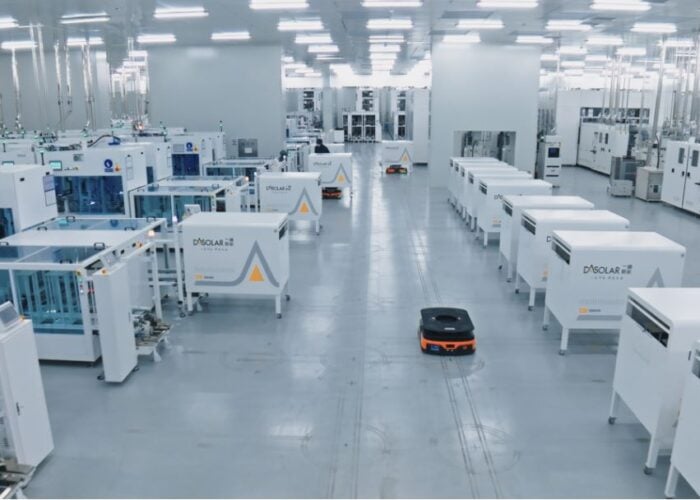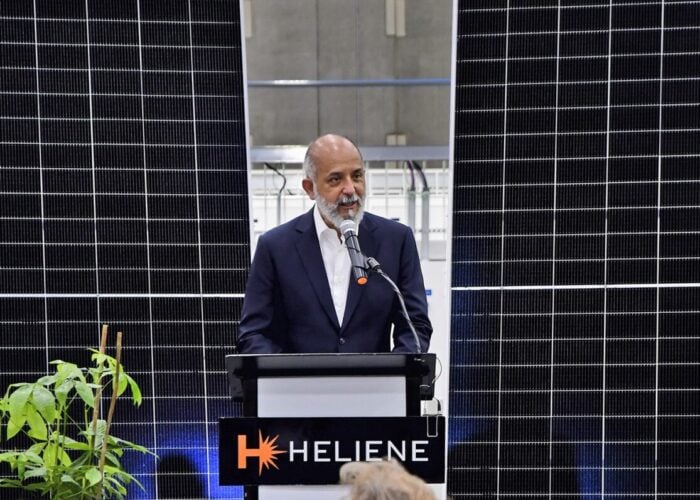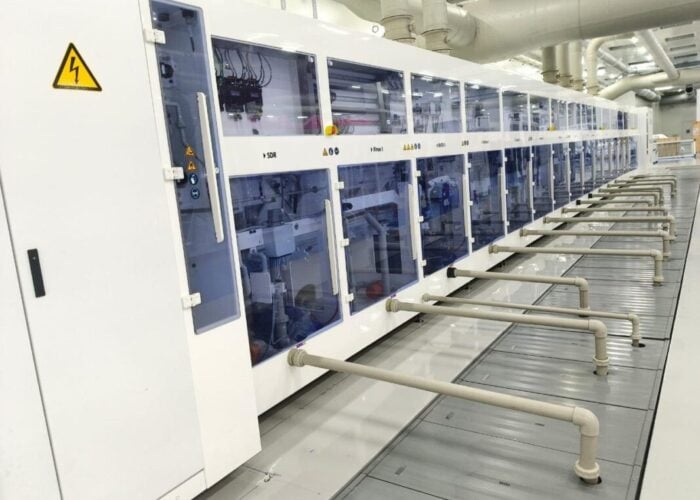Researchers at EPFL’s Photovoltaics Laboratory and the CSEM PV-center have reported a record tandem junction solar cell with conversion efficiencies of 25.2%, using a standard monocrystalline cell and an evaporation and spin-on process to fully coat the structure.
EPFL and CSEM claim the simple manufacturing technique could be directly integrated into existing production lines, and the cell conversion efficiency could eventually rise above 30%, according to new modelling.
Try Premium for just $1
- Full premium access for the first month at only $1
- Converts to an annual rate after 30 days unless cancelled
- Cancel anytime during the trial period
Premium Benefits
- Expert industry analysis and interviews
- Digital access to PV Tech Power journal
- Exclusive event discounts
Or get the full Premium subscription right away
Or continue reading this article for free
In tandem cells, perovskite complements silicon cells as it converts blue and green light more efficiently, while silicon based cells are better at converting red and infra-red light.
“By combining the two materials, we can maximize the use of the solar spectrum and increase the amount of power generated. The calculations and work we have done show that a 30% efficiency should soon be possible,” say the study’s main authors Florent Sahli and Jérémie Werner, which was published in the technical journal, Nature.
“Silicon’s surface consists of a series of pyramids measuring around 5 microns, which trap light and prevent it from being reflected. However, the surface texture makes it hard to deposit a homogeneous film of perovskite,” explains Quentin Jeangros, who co-authored the paper.
Typically, perovskite materials on their own have been deposited on small test glass plates in a liquid form, then spin coated for uniformity. However, when deposited on a conventional cell, which has a textured surface the material accumulates in the valleys between the pyramids while leaving the peaks uncovered, which lowers efficiency and creates short circuits, according to the new study.
Using an evaporation method to form an inorganic porous base layer that fully covers the pyramids was developed, enabling it to retain the liquid organic solution that is then added via spin-coating.
The substrate is heated to a relatively low temperature of 150°C to crystallize a homogeneous film of perovskite on top of the silicon pyramids, providing a uniform coating and elimination of material accumulation in the pyramid valleys.
“We are proposing to use equipment that is already in use, just adding a few specific stages. Manufacturers won’t be adopting a whole new solar technology, but simply updating the production lines they are already using for silicon-based cells,” explains Christophe Ballif, head of EPFL’s Photovoltaics Laboratory and CSEM’s PV-Center.






